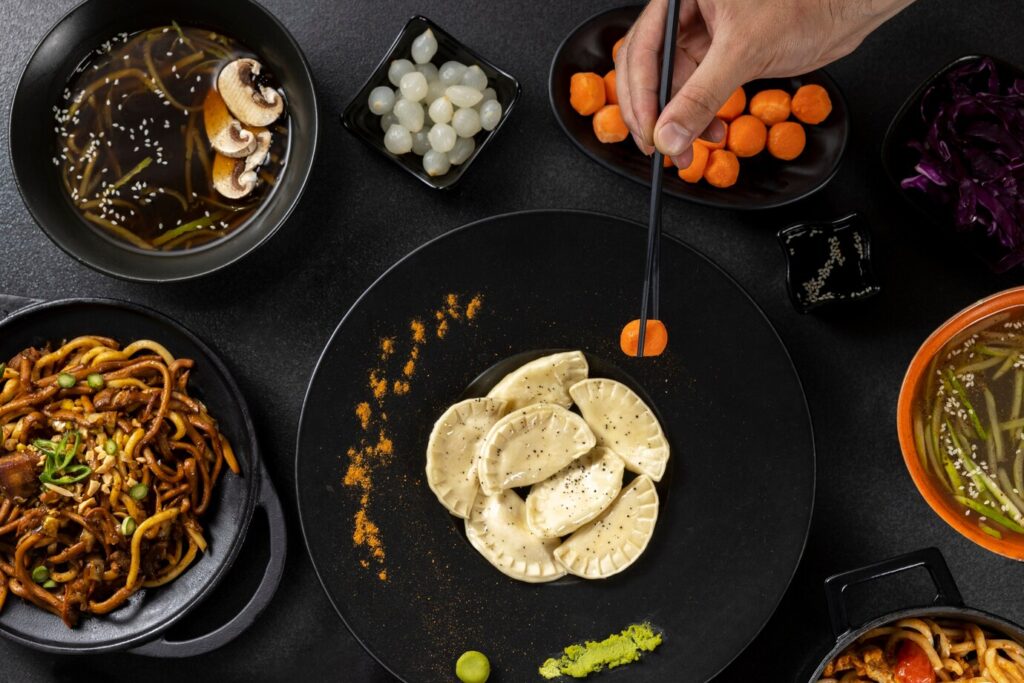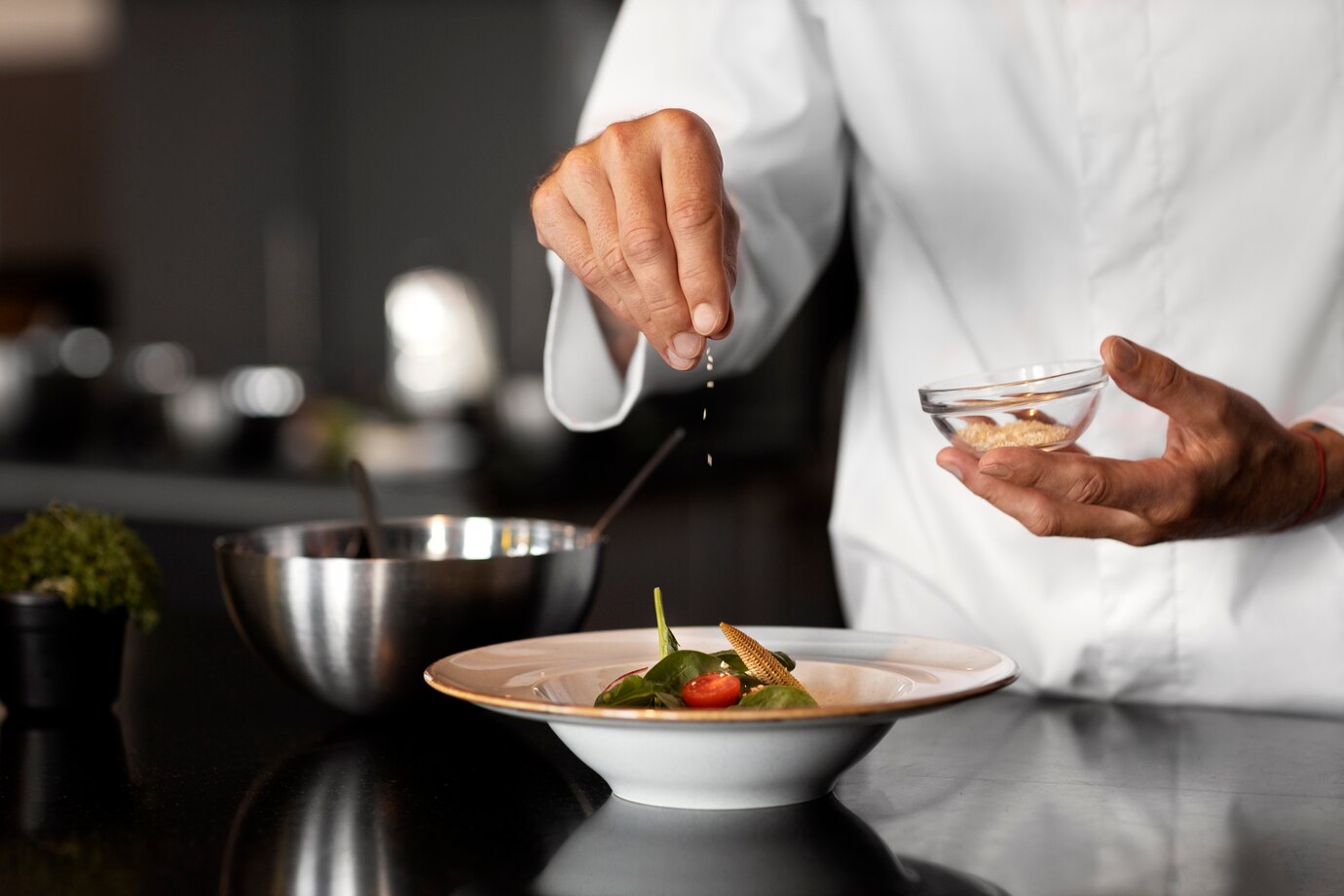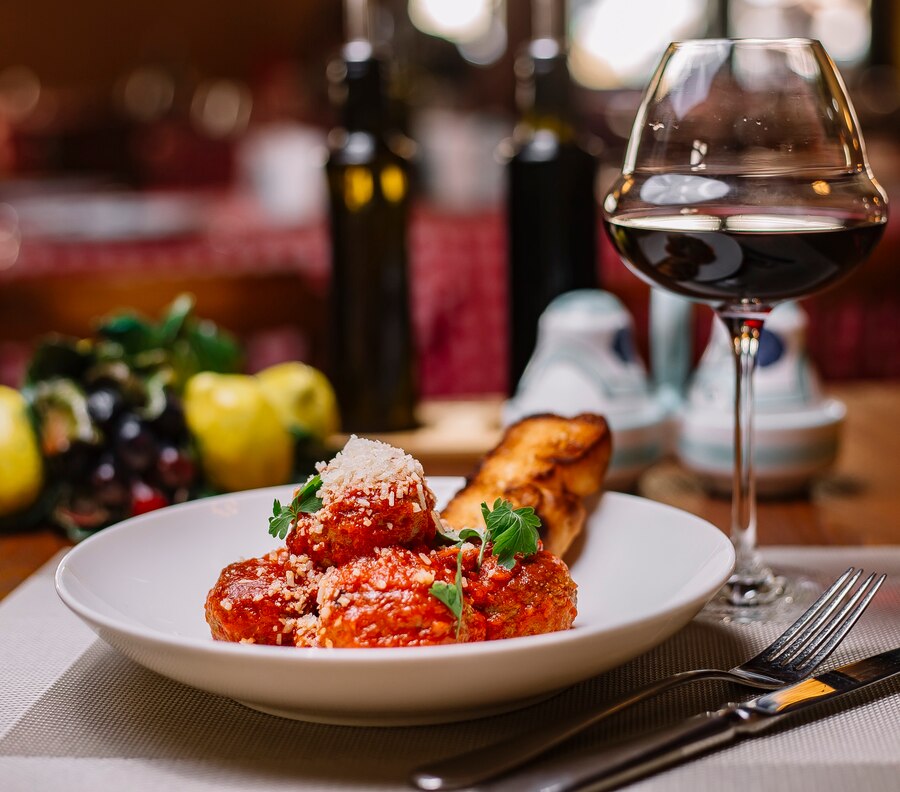The Food Blog

What Makes Michelin-Starred Cuisine So Special?
The Michelin Guide is known for fine dining excellence, but what makes a Michelin-starred restaurant special? These stars mean more than just good food; they show a level of culinary skill, precision, and service that sets the restaurant apart. For chefs and restaurateurs, getting a Michelin star is the top achievement. For diners, it promises an unforgettable gastronomic experience.
In this guide, you’ll discover what makes Michelin-starred cuisine so special, from the meticulous cooking techniques and ingredient quality to the exceptional presentation and service standards.
The History and Significance of Michelin Stars

1. Origins of the Michelin Guide
The Michelin Guide was created in 1900 by the French tyre company Michelin to help drivers find reliable restaurants and hotels while travelling. Initially a simple guidebook, it soon became the gold standard for culinary excellence, awarding stars to exceptional restaurants starting in 1926.
2. What Do the Stars Mean?
Michelin stars are awarded on a scale of one to three, with each star representing a different level of culinary distinction:
- One Star: A very good restaurant, worth a stop.
- Two Stars: Excellent cooking, worth a detour.
- Three Stars: Exceptional cuisine, worth a special journey.
3. The Prestige of Michelin Recognition
Earning a Michelin star can transform a restaurant overnight. It attracts global attention, increases bookings, and enhances the chef’s reputation. However, the pressure to maintain Michelin status is intense, with chefs often striving for perfection to avoid losing a star.
What Sets Michelin-Starred Cuisine Apart?
1. Uncompromising Ingredient Quality
Michelin-starred restaurants are known for sourcing the finest, freshest, and highest-quality ingredients. Chefs often build relationships with local farmers, fishermen, and artisanal producers to ensure every component of the dish is exceptional.
Examples of Ingredient Excellence:
- Seafood: Only the freshest, sustainably sourced fish and shellfish.
- Meat: Grass-fed, heritage-bred, and often dry-aged for maximum flavour.
- Vegetables and Herbs: Seasonal and locally grown, often from the restaurant’s own garden.
- Exotic and Rare Ingredients: Black truffles, Japanese wagyu beef, or Beluga caviar are commonly featured in Michelin-starred dishes.
Why It Matters: The focus on premium ingredients ensures every bite delivers depth and complexity, elevating the overall dining experience.
2. Meticulous Cooking Techniques
Michelin-starred chefs are masters of precision cooking techniques, often using cutting-edge culinary methods alongside traditional skills.
Signature Techniques in Michelin Kitchens:
- Sous-vide Cooking: Ingredients are vacuum-sealed and slow-cooked in water at a precise temperature, preserving flavour and tenderness.
- Molecular Gastronomy: Chefs use scientific techniques like spherification, foaming, and liquid nitrogen to create innovative textures and presentations.
- Slow Roasting and Braising: For meat and fish, slow cooking ensures maximum tenderness and flavour infusion.
- Perfect Searing and Caramelisation: Michelin chefs meticulously sear meats and fish to create a golden crust while keeping the inside tender.
Why It Matters: These advanced methods guarantee perfectly cooked, flavourful dishes that reflect technical mastery.
3. Impeccable Presentation
Michelin-starred cuisine is as much about visual artistry as it is about taste. Dishes are often meticulously plated with geometric precision, colour contrasts, and elegant garnishes.
Key Elements of Michelin-Quality Presentation:
- Precision Plating: Ingredients are arranged with mathematical accuracy, creating visual harmony.
- Minimalist Yet Striking: Clean, elegant plates with restrained garnishes that enhance the visual appeal without overwhelming the dish.
- Creative Use of Colour: Vivid vegetable purées, edible flowers, and artistic sauce drizzles add visual drama.
- Custom Tableware: Many Michelin-starred restaurants use handcrafted plates and serving vessels designed to complement the dish.
Why It Matters: The stunning presentation adds to the sense of occasion and exclusivity, making the dish feel like a work of art.
4. Precision in Flavour and Balance
Every bite at a Michelin-starred restaurant delivers a complex balance of flavours. Chefs focus on:
- Harmonising sweet, sour, salty, and umami notes.
- Layering textures—crispy, creamy, and tender elements in the same dish.
- Balancing spices and aromatics for perfectly seasoned dishes.
Examples of Flavour Complexity:
- Foie Gras with Berry Reduction: Rich and buttery foie gras balanced by the tartness of the berries.
- Sea Bass with Yuzu Sauce: The tangy citrus sauce enhances the mild sweetness of the fish.
- Chocolate Fondant with Sea Salt Caramel: The bitterness of dark chocolate paired with the sweetness of caramel and a hint of salt.
Why It Matters: The carefully balanced flavours create multi-dimensional taste experiences that are both refined and memorable.
5. Exquisite Wine Pairings

Michelin-starred restaurants often offer expertly curated wine lists, with sommeliers recommending precise pairings to enhance each dish’s flavours.
Wine Pairing Techniques:
- Complementary Pairings: Matching wine and food with similar flavour profiles (e.g., a buttery Chardonnay with creamy pasta).
- Contrasting Pairings: Combining contrasting flavours to enhance both (e.g., spicy curry with a sweet Riesling).
- Rare and Vintage Wines: Michelin establishments frequently offer rare vintages and premium labels.
Why It Matters: The perfect wine pairing enhances the dish’s complexity, making the overall experience more luxurious.
6. Exceptional Service and Ambiance
The dining experience at Michelin-starred restaurants is about more than just the food—it’s about the impeccable service and atmosphere.
Hallmarks of Michelin-Level Service:
- Attentive Yet Discreet: Staff anticipate diners’ needs without being intrusive.
- Expert Knowledge: Servers and sommeliers provide detailed explanations of dishes and wines.
- Perfect Timing: Dishes are served with precise timing to maintain temperature and quality.
Ambiance and Décor:
- Elegant, minimalist décor with attention to lighting and table settings.
- Comfortable seating and noise levels are conducive to conversation.
- Signature tableware and linen add a touch of luxury.
Why It Matters: The seamless service and refined ambience elevate the entire dining experience.
The Experience of Dining at a Michelin-Starred Restaurant
1. Anticipation and Exclusivity
Many Michelin-starred restaurants have months-long waiting lists, creating a sense of exclusivity. Diners often travel great distances for the experience.
2. Tasting Menus and Chef’s Creations
Most Michelin-starred establishments offer multi-course tasting menus, showcasing the chef’s creativity and skill. Each course is designed to tell a culinary story.
3. Memorable Culinary Moments
From amuse-bouches to palate cleansers and signature desserts, Michelin meals are filled with surprising and delightful touches.
“Michelin-Starred Dining: A Culinary Experience Like No Other”

What makes Michelin-starred cuisine so special is its dedication to perfection at every level—from ingredient quality and expert techniques to presentation and service. Dining at a Michelin-starred restaurant is not just a meal—it’s an immersive, multi-sensory experience.
Whether you’re a fine dining enthusiast or simply curious about the world of Michelin stars, experiencing this level of culinary excellence is a once-in-a-lifetime indulgence worth savouring.









